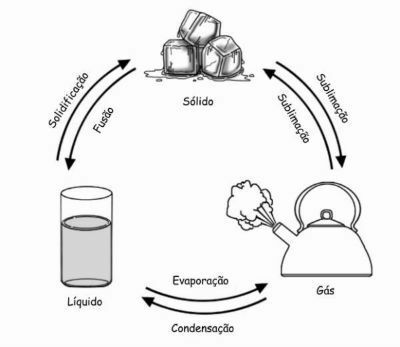kinematics is the branch of mechanics that studies the movement of bodies without taking into account the origin of the movement, which is the subject of dynamics. She studies concepts such as position, displacement, referential, trajectory, among others.
This area of Physics studies allows the movement to be equatedIn this way, it is possible to predict the position, speed or any other parameters of the movement of a piece of furniture in moments later than the present.
See too: Formulas, Examples and Exercises Solved About Uniform Motion
introduction to kinematics
Kinematics is one of the branches of mechanics, the area of physics that studies motion. Mechanics, in turn, has as main areas the kinematics, The dynamics and the static. Kinematics focuses on the study of the movement of bodies without taking into account the causes of the movement.
Whether it's the trajectory of small particles or even planetary orbits, all macroscopic motion can be described using equations of movement. These equations relate quantities such as position, velocity and
acceleration with the passage of time. To understand them, however, it is necessary that we know some simple concepts, but essential to understand the movement of bodies.
Fundamentals of Kinematics
Let's get to know some of the concepts that are fundamental to the study of kinematics.
→ Referential
Referential it is the position in which the observer finds himself. It is usually chosen as the source of a Cartesian plane. It is from the referential that the positions of things are determined.
For a person standing on the street, for example, a car passes moving at 60 km/h, however, for the driver of the vehicle, the car is stationary, since both are moving at the same speed.
→ Movement
movement and rest are conceptsrelative in kinematics. A body can be in motion in relation to a reference frame, but stationary in relation to another. Therefore, we say that movement is the situation in which the position of a body changes, over a certain period of time, in relation to a reference frame.
→ Trajectory
trajectory is the successionof thepositionsoccupied by a piece of furniture. There are straight and curvilinear or even chaotic trajectories, in the case of particle movement, for example. The shape of the trajectory of a body depends on the observation frame.
When we walk on the sand of the beach, for example, the footprints we leave are a record of the positions we were in in the previous moments, so they can be understood as a trajectory.
Do not stop now... There's more after the advertising ;)
→ Mobile
In physics, mobile is any body that changes position over time.
→ material point
Material point is the quality of any piece of furniture that can have its dimensions neglected compared to the distances covered. An airplane, for example, can be considered a material point in a 2000 km journey, but its dimensions cannot be neglected when he is maneuvering on the ground, where he traverses small distances.
→ space traversed
Space traversed is the measure of the length of the trajectory described by a rover; in other words, it concerns the distance the mobile has covered.
→ Displacement
Displacement, unlike space traversed, is Vector greatness, as it presents module, direction and direction. Displacement is the difference between the end and start positions of a movement. On a closed path, the displacement is zero.
See too:How to solve exercises on Newton's laws?
Solved Exercises on Kinematics
question 1 — (IFSC) Today we know that the Earth revolves around the Sun (heliocentric system), just like all other planets in our Solar System. But in Antiquity, man believed to be the center of the Universe, so much so that he considered the Earth as the center of the planetary system (geocentric system). This consideration was based on everyday observations, as people watched the Sun revolve around the Earth.
It is correct to state that ancient man concluded that the Sun revolved around the Earth due to the fact that:
a) considered the Sun as its frame of reference.
b) considered the Earth as its frame of reference.
c) forgot to adopt a referral system.
d) considered the Moon as its frame of reference.
e) considered the stars as its frame of reference.
Resolution:
Ancient astronomical observations took the Earth into account as a reference point. For this reason, it was natural to conclude that the Sun revolved around the Earth. The correct alternative is the letter B.
Question 2 —(CFT-MG) On the concepts of referential, position, velocity and acceleration, fundamental for the study of movements in Science, it is correctly stated that the concept of:
a) position is associated with the location on a trajectory and does not depend on the adopted frame of reference.
b) referential is associated with the velocity and acceleration value of the moving object.
c) speed is related to the change of position and does not depend on the adopted reference.
d) acceleration is related to the change in the value of the velocity measured in a given reference frame.
Resolution:
Acceleration is a measure of the change in velocity over a given period of time, so the correct alternative is the letter D.
By Rafael Hellerbrock
Physics teacher


